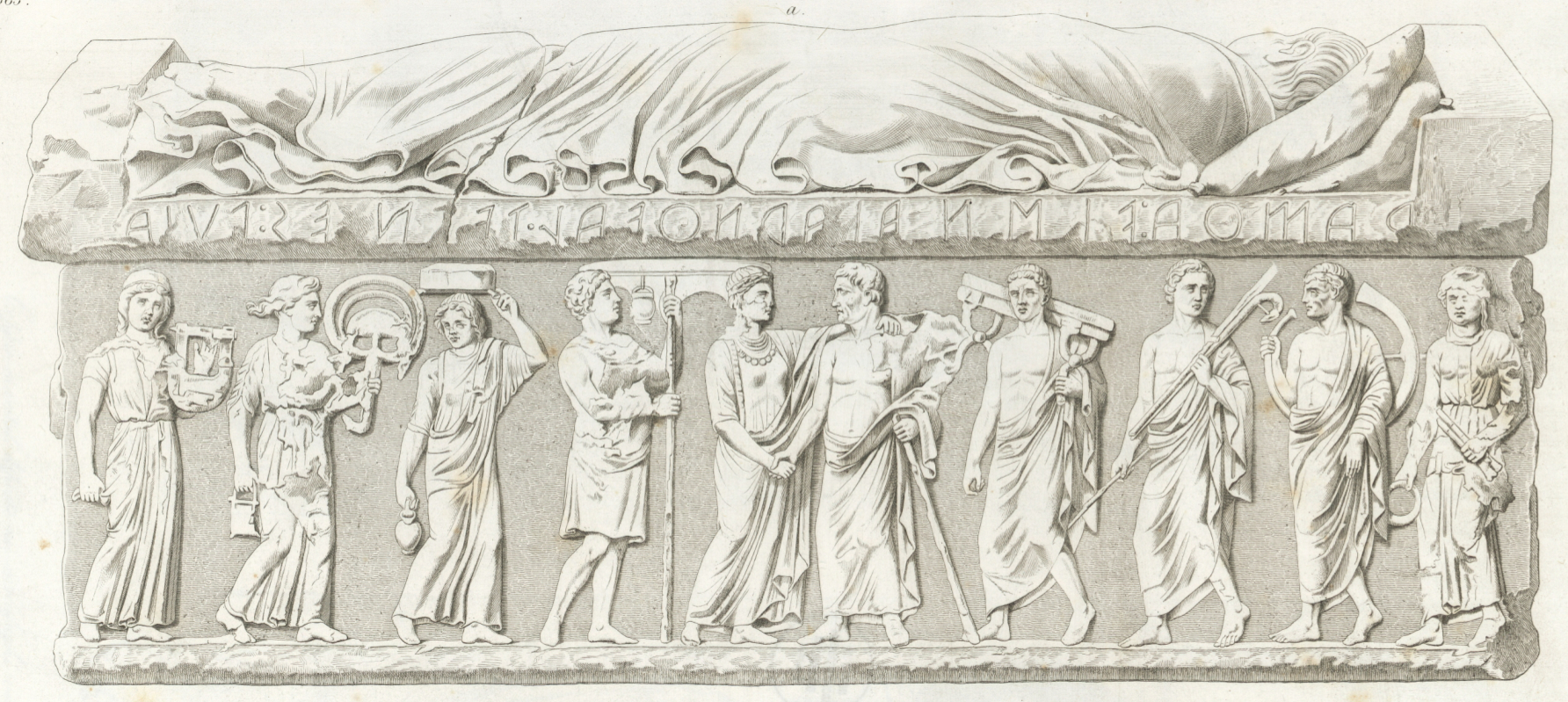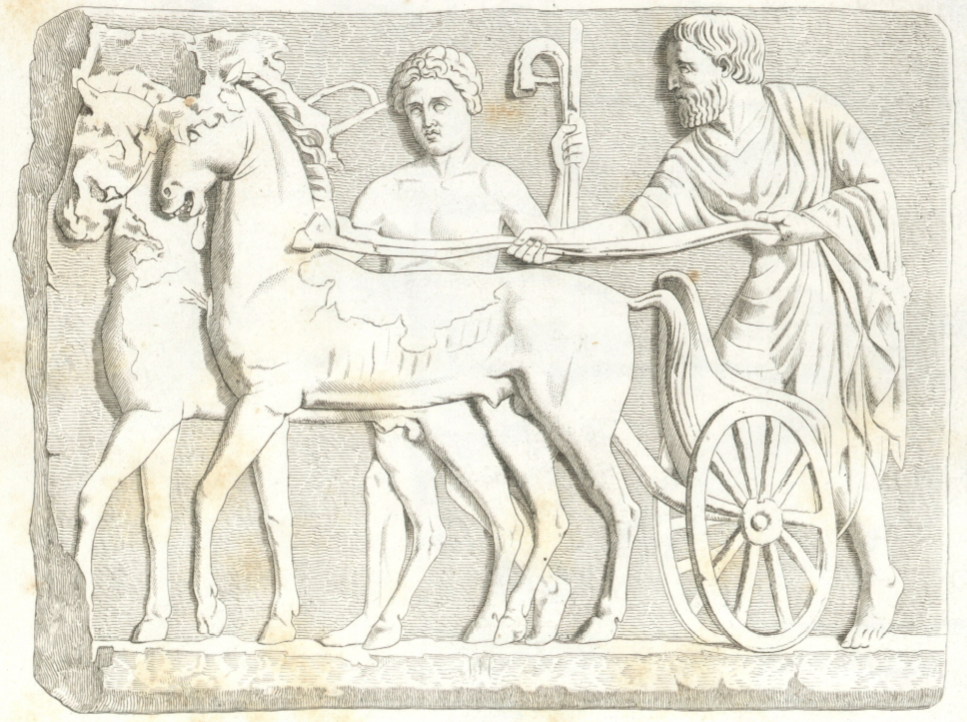Find Spot: Vulci
Current Location: Boston Museum
Description: Cornu and lituus players among a group of figures on an Etruscan sarcophagus.
-
IC115a Lituus and player on Figure IC115-1, below
-
IC115b Cornu and player on Figure IC115-1, below
-
IC115c Lituus and player on Figure IC115-1, below
Description of one long side of the sarcphagus from Rowland 2008, p.154, covers IC115a&b:
Although the sarcophagus of Ramtha Vishnai and Arnth Tetnies shows a couple on its lid, it is as narrow as a coffin designed for a single occupant. Its lone inscription refers specifically to the wife, Ramtha Vishnai, and it is she whom we see when we look at the sar- cophagus from its inscribed and sculpted long side. (The other long side is blank.) Her epi- taph (TLE 320) describes her simply, as ramtha vishnai arntheal tetn[i]es puia, “Ramtha Vishnai, the wife of Arnth Tetnies”, and the decoration of the sarcophagus itself focuses on this characterization. Its decorated long side, sculpted in relief, [Figure IC115-1] centers on the cou- ple, Ramtha Vishnai on the left, Arnth Tetnieson the right, each of them followedby a series of attendants. Arnth Tetnies appears here as the same mature man we see on the coffin’slid, with lined face and prominent belly. His entourage bears implements that indicate high office: a curule chair, a trumpet, a rod. He grasps Ramtha Vishnai’s right wrist with his right hand and carries a knotty walking stick in his left. She, in turn, drapes her left hand around his neck. Her attendants, three women and a young man, bring implements —a box, a fan, an oinochoe, a situla, a krater,and a cithara—that have been taken to imply that she also held an important position as a priestess (one scholar has suggested, because of the krater,that she must have served the wine god Fufluns).
Although this meeting of the spouses has sometimes been described as a wedding procession (as it is, for example, on the Boston Museum’s own website), the couple’s matu- rity and the absence of a wedding canopy both militate against such an intepretation. As Otto Brendel has observed, Arnth Tetnies’ walking stick implies travel; rather than the cou- ple’s wedding, he suggests, plausibly, that we must be bearing witness to their reunion in the afterlife. This is also the conclusion of L. Bouke van der Meer, who suggests that: “Maybe, this scene is an anticipation or prolepsis of Arnth’s journey to the Underworld. If this hypothesis is right, Arnth was still alive when Ramtha died.”
Description of one end of the sarcphagus from Rowland 2008, p.154, covers IC115c:
The right short side [Figure IC115-2] shows a slim, bearded man steeping into a chariot drawn by two horses, attended by a youth with a rod and a lituus, symbols of the bearded man’s status as a magistrate. Although he is sometimes identified as Arnth Tetnies, his appearance in fact shares nothing in common with the portly,clean-shaven man we see else- where on the coffin except a prominent aquiline nose. Brendel, with characteristic sensitivity, describ
Citations: Nogara 1933: p.89, Figure 41; Herbig 1952: p.13, Taf. 40b and c, No. 5: Rowland 2008, Fig 3 pp. 154/5
Image: Figure IC115-1
Image: Figure IC115-2

